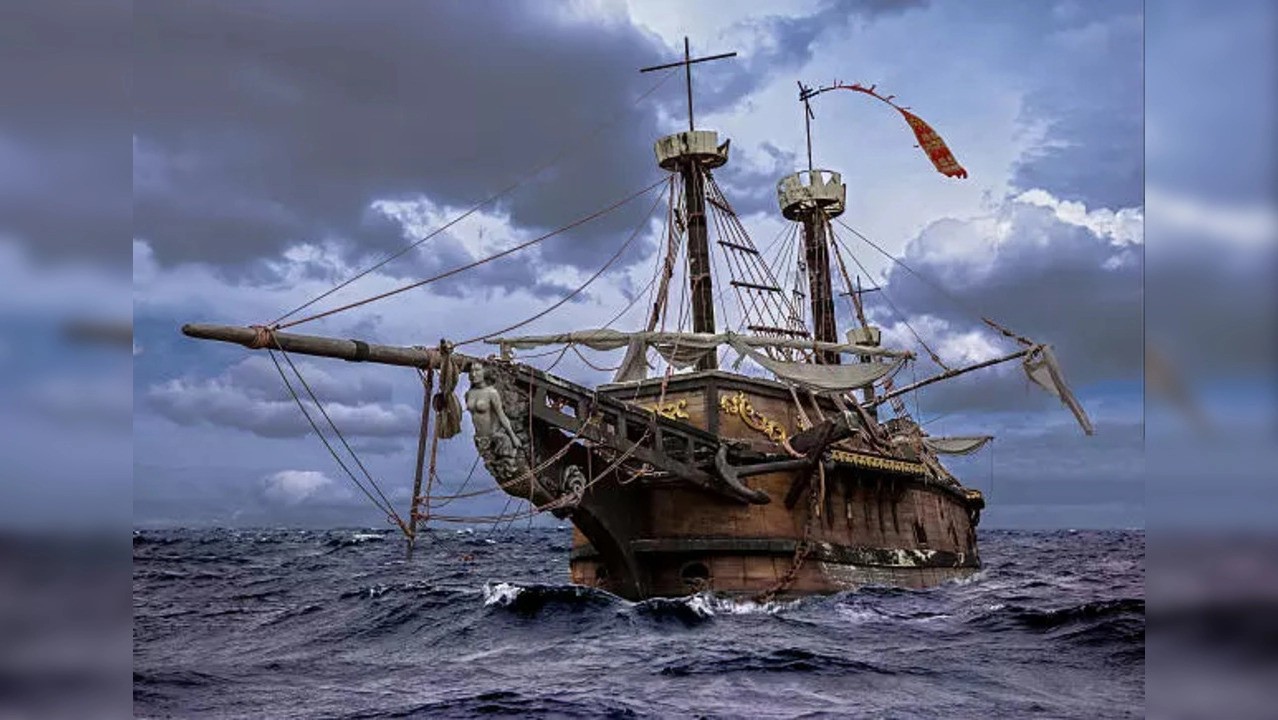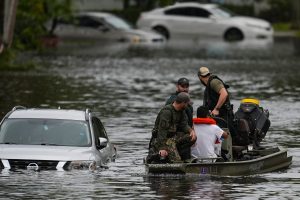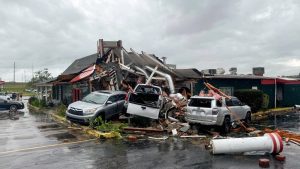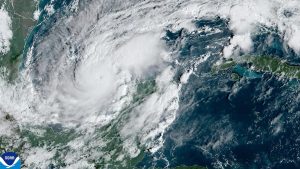Did Hurricane Milton Really Uncover a 1700s Pirate Ship? The Truth Behind the Viral Hoax
USA NEWS – Rumors of a ghostly pirate ship washed ashore near St. Augustine after Hurricane Milton have taken social media by storm. On Wednesday, stories began circulating online, claiming that a 1700s-era ship had been uncovered on the Florida coast. This mysterious vessel supposedly emerged in the aftermath of Hurricane Milton, fueling wild speculation and intrigue. However, despite the captivating nature of this tale, there’s a significant problem: the story is entirely fabricated. The hurricane, which made landfall on the opposite side of the state, had no connection to this ghostly legend.
The viral post, which garnered over 21,000 shares, spread like wildfire across social platforms, captivating users with its eerie allure. The idea of an ancient pirate ship reappearing after centuries is certainly enticing, especially with Halloween just around the corner. However, the original source of this tall tale, a Facebook page called Casper Planet, is known for publishing satirical news in the same vein as The Onion. Despite the page’s humorous intent, many readers fell for the hoax, further spreading the false story.
Adding to the satire, Casper Planet continued to play along, posting an update titled, “Tourists Outraged After Discovering Non-Existent 1700s Pirate Ship in Florida ‘Wasn’t Real’ All Along.” The fake outrage only added to the story’s bizarre appeal, with the post humorously lamenting how tourists were shocked to find that the ghost ship didn’t actually exist. The story even included a fabricated marine archaeologist’s quote, claiming the ship’s appearance was “both fascinating and chilling.”
Though entirely fictional, the story drew attention to the broader fascination with ghost ships and their connection to hurricanes. While the St. Augustine pirate ship is a hoax, there have been real-life instances where storms have uncovered mysterious vessels. In 2017, a 45-foot sailboat named Cuki broke free from its anchorage during Hurricane Irma and washed ashore hundreds of miles away. Similarly, in 2018, a ghost ship called Lady Catherine III washed up in Pensacola Beach after Tropical Storm Alberto. These real-life events have added a layer of believability to the recent hoax.
Maritime archaeologists were quick to debunk the St. Augustine story, emphasizing that the harsh reality of shipwrecks doesn’t align with the romanticized versions we see in pop culture. Chuck Meide, director of the Lighthouse Archaeological Maritime Program, pointed out that most wooden ships from the 1700s would have been consumed by marine life or buried under the seafloor. Even when fragments do survive, they are rarely in the pristine condition depicted in the fake news story.
Despite the fun nature of the ghost ship story, it also serves as a reminder of the power of social media to spread misinformation. With Halloween approaching, the spooky season is ripe for similar tales to capture the public’s imagination. But it’s important to verify the source of such stories before sharing them widely. Satirical news outlets like Casper Planet exist to entertain, not inform, and while they provide a good laugh, their stories shouldn’t be mistaken for fact.
The fascination with ghost ships isn’t likely to disappear anytime soon, especially in hurricane-prone regions like Florida, where the combination of powerful storms and historical maritime culture stirs the imagination. While the idea of a ghostly pirate ship washing ashore may make for a captivating narrative, the truth behind such stories is often less glamorous but no less interesting.



